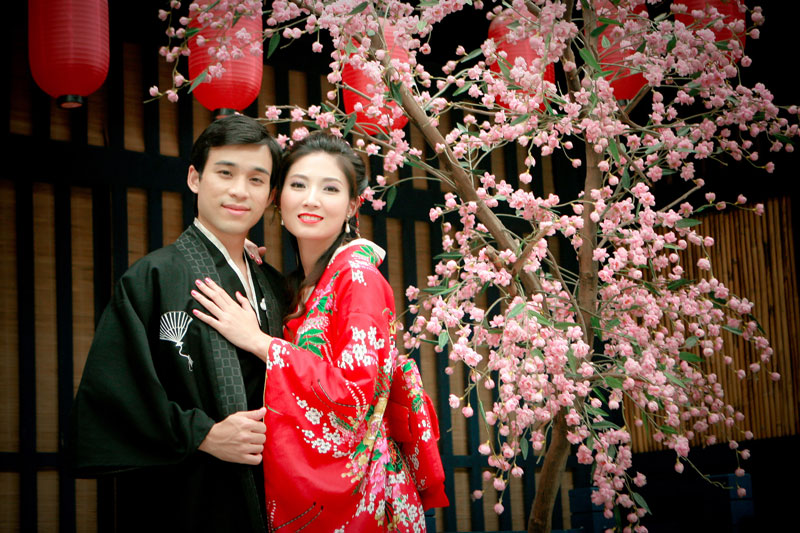

MASTER'S BOOK
TRADITIONAL JAPANESE WEDDING. CUSTOMS, SUPERSTITIONS AND DISHES
Traditional Japanese wedding
Civil marriages and church celebrations are equally popular in Japan. Despite the increasing popularity of Christian weddings, Shinzenshiki remains the one truly Japanese ceremony. Pseudo-Christian weddings combine various traditions, which makes the ceremony slightly eccentric. In the native version, i.e, actual Shinzenshiki, the tradition is based entirely on Shintoism. Shinzenshiki is a very costly ceremony, not affordable to all. During a traditional rite, the bride is dressed in an exquisite, several-layer kimono and an ornamental head cover – tsuno kakushi. Her face and body is covered in white paint, symbolising purity. The groom wears a black kimono. The marriage is solemnised before a priest – nakodo, in a shrine, to the accompaniment of traditional instruments and in the company of the closest family. The marriage ceremony is concluded with sake being drunk from glasses nine times – just after the newly-weds exchange the rings. Shinzenshiki ends with a wedding reception where traditional outfits are no longer worn – the bride puts on a dress and the groom – a suit.
Japanese wedding customs
Until the middle of the 20th century, weddings in Japan were arranged by the parents of the bride and the groom. The first tradition involves an engagement meeting, during which the parents of the groom-to-be give presents to his fiancé – linen threads, sake, a sack with cash, clothes and tea. During the wedding, the bride shows these to the wedding guests. Guests are assigned their seats at the reception, yet not in line with family connections but according to professional and social hierarchy. Once the first toast is raised by the match-maker, the main part of the celebration – hiroen – begins. During the reception, the Japanese tell amusing stories, raise toasts and enjoy one another’s presence. Wedding presents are given during the reception. They are decorated with mizuhiki – a string prepared specifically for that purpose. The colours of the packaging always combine red and white, red and gold, scarlet and white, silver and gold. Contrary to Polish weddings, Japanese celebrations do not emphasise family ties – they are slightly more official. Guests must put on suitable clothes – black suits, white ties and white shirts for men, and cocktail dresses or elegant kimonos for women.
Japanese wedding dishes
Japanese wedding menu considerably differs from traditional Western food. The celebration is opened with a fish dish. There is also plenty of red rice, sake, seaweed and brown algae. Meet is a rarity, being associated with special luxury only. The cutting of the wedding cake is a highly respected custom, which turns into a small ceremony in its own right.
Tradition and modernity
Even though the Japanese are highly attached to tradition, it is increasingly often replaced by modernity – many Japanese people choose a Christian wedding or a civil marriage nowadays. Nonetheless, traditional weddings still remain popular and the wedding industry is thriving.














